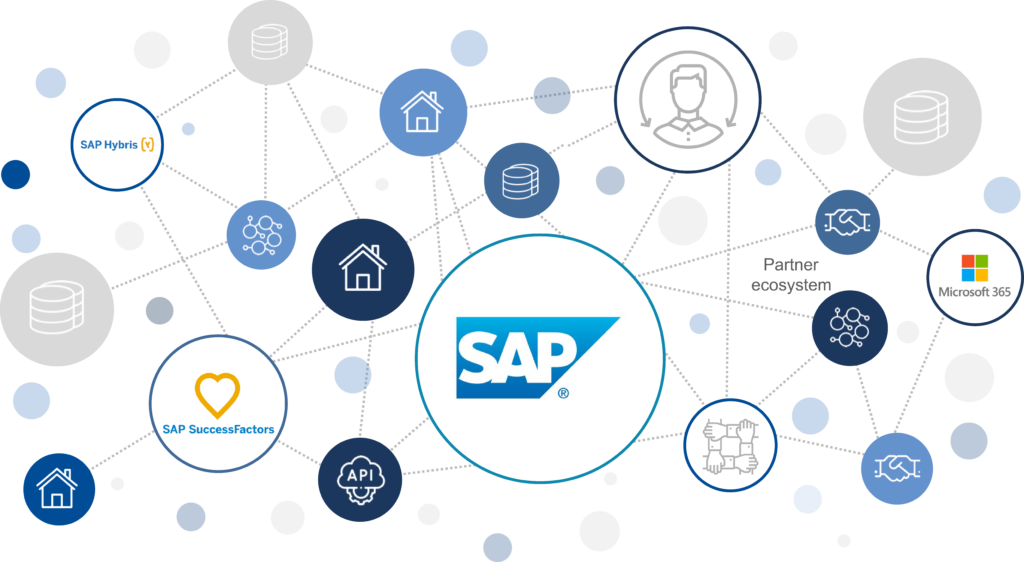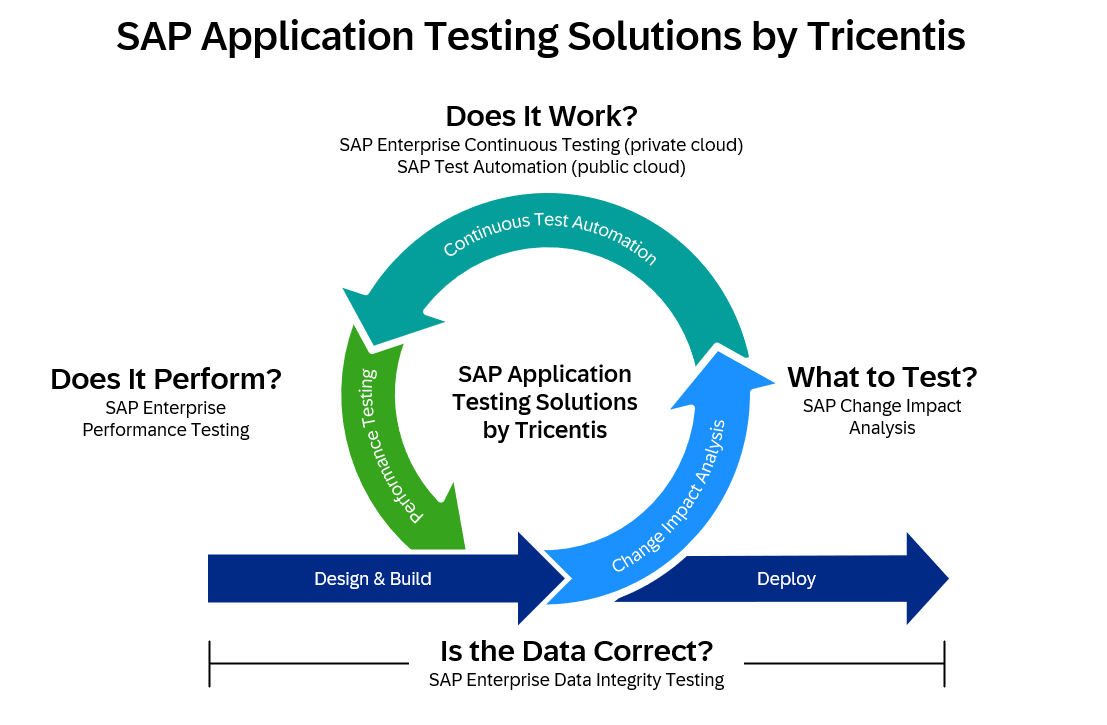Originally written in 2021, this blog has been updated with new information.
Companies are moving to the cloud faster than ever. Currently, organizations deploy an average of 130 SaaS apps per organization — and this number is growing. According to Gartner, 95% of new apps are expected to be built in the cloud by 2025.
Automation is critical to superior user experiences
IT landscapes are becoming increasingly complex networks of many interconnected parts. All parts must seamlessly function together to keep your business running smoothly and enable you to provide excellent customer experiences. This environment demands CI/CD practices and test automation to ensure optimal user experiences. Other obstacles to great customer experiences include:
- Complex integrations: Enterprise application environments (ERPs) are likely to have a substantial volume of integrations; the number can be in the thousands for some larger organizations. This can be a mix of interconnected on-premises and SaaS applications.

The challenge is that you’re not only dealing with application changes, but also with environment and data changes. Data changes frequently by its nature, and an environmental change can be something as simple as a Microsoft update or the deployment of a new browser version. One end-to-end process within your IT landscape can touch multiple systems and technologies, from mainframes to legacy custom apps to microservices and cloud-native apps. A change in one part of the system can (and will) impact other parts of the system, potentially breaking a key process that is crucial to your business.
With every change, and prior to every release, you must test your applications and landscape thoroughly to ensure that you are not disrupting your business.
- Accelerated release cycles: Due to the shift to the cloud and the widespread adoption of Agile methodologies, release cycles are getting shorter. According to a recent DORA state of DevOps report, DevOps leaders are deploying 417 times more than their peers, reflecting this trend.
- Talent shortage: To add fuel to the fire, technical resources are increasingly limited. IDC projects a shortfall of 4M software developers by 2025. ‘Do more with less’ will take on greater meaning.
To stay competitive under increased pressure to test faster with fewer resources, Quality Assurance teams must embrace holistic automated testing tools and practices.
SAP and digital transformation
SAP is encouraging its customers to move to the cloud to facilitate digital transformation and become intelligent enterprises. The cloud offers flexibility, scalability, and access to the latest updates and innovations like artificial intelligence and machine learning. By moving to the cloud, businesses can modernize their operations, improve efficiency, and most importantly, stay competitive in a rapidly evolving market.
The first step in this transformation journey is migration to S/4HANA, SAP’s latest ERP suite, which offers advanced analytics and real-time data processing. Moving to S/4HANA future-proofs your business and provides you with easy access to the latest updates and innovations from SAP.
These migration projects are very complex, and for this reason, many SAP customers have yet to migrate to S/4HANA, although SAP is discontinuing maintenance support for ECC (its predecessor) in 2027. Many customers are feeling the pressure and plan to migrate soon, yet there is quite a bit of reluctance and hesitation due to the migration’s complexity and risk of disruption.
Some customers opt to go with a fresh start (greenfield). Others decide to replicate their ECC implementation in S/4HANA (brownfield) to have the least potential disruption to their business. And many will proceed with incremental transformation, which is a compromise between the two options. Each of these have their pros and cons, but that is a discussion for another post.
However, no matter the path to the cloud, the goal is the same: driving digital transformation to boost speed, agility, and innovation while minimizing risks and costs.
Many businesses are now making substantial investments in their SAP systems to achieve this goal. To minimize the associated risks and move fast, they must adopt rigorous test automation practices and methodologies to stay on track. But all too often, they lack the level of automation required to complete their projects with the speed and quality necessary for a successful launch in the cloud.
Safeguarding your SAP journey to the intelligent enterprise and beyond
All IT projects and programs require various levels of support, services, and tasks. However, to modernize themselves safely and swiftly with advanced technologies like SAP S/4HANA and cloud solutions, SAP customers must continuously assess and test their implementation setup, iteratively and incrementally.
Unfortunately, in the average organization testing efforts are often overly manual and siloed. This disconnect further extends the project timeline, increases the IT budget, and derails the integration of end-to-end processes. This is the reality: the limitations of traditional methods shine a light on manual testing as one of the most significant barriers to innovation, rather than being an enabler of innovation.
SAP and Tricentis have partnered to help SAP customers improve their project delivery timelines while taking advantage of the untapped potential of automated testing and robust quality engineering practices. The Tricentis platform of testing tools supports cost-effective, simplified, and optimized software testing processes enabled by artificial intelligence, codeless automation, and risk-based test plans. As a result, SAP customers can innovate faster, deliver smoother releases, and achieve better business outcomes along every step of their journey to SAP S/4HANA and beyond.

The benefits our partnership brings to the table include change impact analysis, continuous testing across SAP and third-party landscapes, performance testing for your SAP and third-party applications, and automated data integrity testing. Furthermore, our continuous testing framework is closely aligned with SAP Activate methodology outlining the quality engineering steps to take at each phase of your transformation project.
Using our automated testing solutions, SAP customers can shift workloads and move to SAP S/4HANA in the cloud quickly and cost-effectively. Plus, they can integrate SAP and third-party applications and technologies, optimize performance to meet user expectations, and help ensure the accuracy of transactional and analytical data.
Embracing continuous automated testing as a catalyst for innovation
SAP customers are discovering that traditional software testing methods are not fast or thorough enough to keep up with the accelerated pace of change. This puts their critical business processes at risk, jeopardizes the scalability and performance of their customer-facing applications, and opens the possibility for data errors that could compromise their analytics and operations. The strain on their existing software testing procedures will only intensify as their business needs call for more innovative use of data and shifting workloads to the cloud.
Customers who have opted to view continuous automated testing as a catalyst for innovation, rather than an afterthought or necessary evil, are embracing transformation with great success. For example, Duke Energy migrated to the largest S/4HANA cloud instance in the U.S. seven months ahead of schedule — while saving millions of dollars — with Tricentis quality engineering solutions. Likewise, Flowers Foods successfully maintained data integrity and business continuity during their SAP S/4HANA migration.
That’s why the partnership between SAP and Tricentis is such an incredible opportunity for SAP customers. They’re not only safely accelerating their digital initiatives with SAP application testing solutions, but they’re also solving pressing challenges without the inefficiency of traditional testing methods.
Want to learn more? Check out our ebook Tricentis and SAP Activate: Your pit crew for the race to S/4HANA, read more about Tricentis’ SAP-sanctioned Solution Extensions, or check out Tricentis + SAP Activate benefits. Ready to get started? Request a demo.